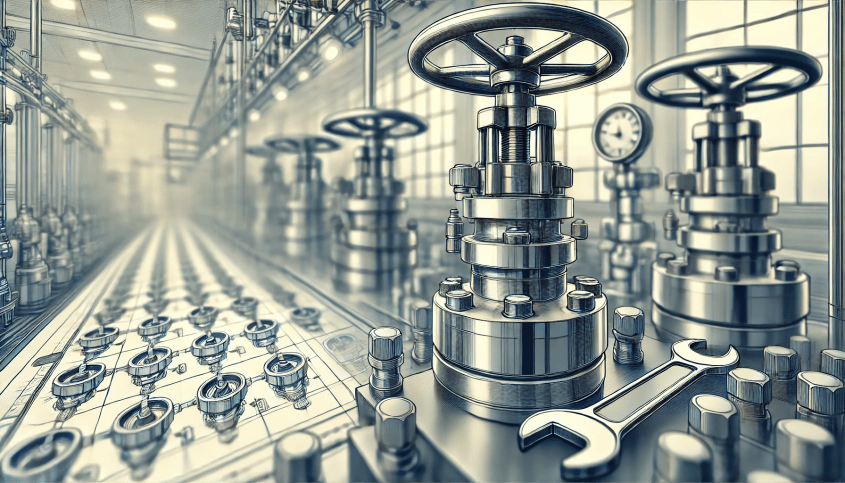
Valves are essential components of filling lines, playing a crucial role in dosing accuracy, leakage prevention, filling speed, and overall product quality. Their timely and proper replacement is vital for maintaining operational efficiency. Here’s what you should focus on when replacing valves, with insights from industry leaders.
1. Valve Type and Functionality
Valves in filling lines serve various purposes, such as regulating flow, preventing backflow, and maintaining specific pressure levels. Different products require specialized valve types:
- Dispensing Valves ensure precise liquid volumes during filling.
- Switching Valves manage flow in multi-line systems.
- Hygienic Valves maintain sterility for products like milk, juices, or other sensitive beverages.
For instance, Krones integrates versatile valves into its lines, accommodating a range of bottle sizes seamlessly.
2. Materials and Environmental Resistance
The material composition of valves must suit the liquid being processed:
- Acidic Beverages need valves made of corrosion-resistant AISI 316L stainless steel.
- Dairy Products require hygienic materials compliant with FDA standards.
- Carbonated Beverages demand valves designed to withstand high pressure.
According to GEA Group, using inappropriate materials can reduce a valve’s lifespan by as much as 40%.
3. Maintenance and Replacement Schedule
Adherence to the manufacturer’s guidelines for valve replacement is critical. Factors such as operating conditions and cycle count dictate replacement frequency. For example, Tetra Pak recommends replacing valves every 1–2 years or after a specified number of usage cycles.
4. Energy Efficiency and Performance
Modern valves are designed with energy-saving features, which contribute to overall line efficiency. For example, KHS Group incorporates valves with minimal pressure loss, resulting in energy savings of up to 20% for the entire line.
5. Costs and Return on Investment
While high-quality valves may have a higher upfront cost, their longevity and lower maintenance requirements make them cost-effective in the long term. A report by Mordor Intelligence highlights that advanced valves can reduce maintenance expenses by up to 25%.
Real-World Examples
The Coca-Cola Company
To modernize a bottling line in the MENA region, Coca-Cola installed new hygienic valves, reducing reject rates by 18% and boosting productivity by 12%.
Nestlé
In its pursuit of energy efficiency, Nestlé adopted Alfa Laval valves, which contributed to a 15% reduction in energy consumption.
By considering these factors, businesses can ensure that valve replacements not only enhance operational efficiency but also provide long-term cost and energy savings.